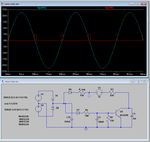raf23
Newbie level 5

Hi
I have a circuit diagram which i believe is for a zero crossing detection. if it is of zero cross detection ,can any one tell whether it is VZC or CZC ? Also it would be helpful if someone can tell the waveform at the collector pin of transistor with respect to ac waveform. ckt diagram is attached here

I have a circuit diagram which i believe is for a zero crossing detection. if it is of zero cross detection ,can any one tell whether it is VZC or CZC ? Also it would be helpful if someone can tell the waveform at the collector pin of transistor with respect to ac waveform. ckt diagram is attached here





